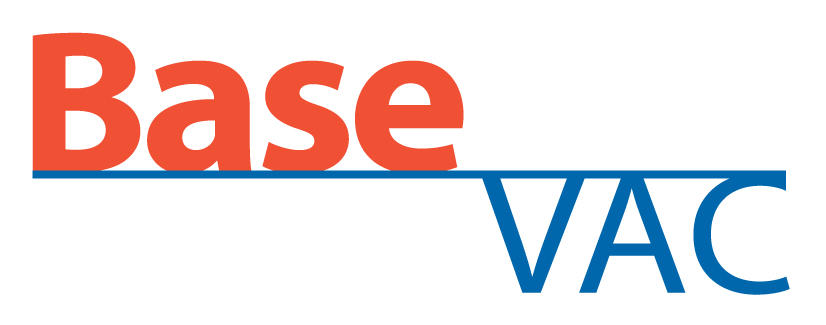BaseVac has created this series in hopes of highlighting BaseVac’s solution to the aerosol problem. Our intent is to help shed light on the best route for Dental Professionals to prepare their clinics for reopening, as well as doing their best to protect their patients, staff, and themselves from cross-contamination through aerosols.
Today’s segment is to explain how Dental Vacuum works, touching on the ideal “sweet spot” in a dental vacuum that allows for the highest aerosol capture at the oral cavity. During this segment, we will also be explaining why extra HVEs with funnels attached to your vacuum may not be helpful in aerosol capture.
The Key to Dental Vacuum
The key to the vacuum tools is to maintain higher than normal suction (vacuum power) throughout the clinic to maximize the flow rate CFM through every tool. Balancing the number of potential users at any given time with a higher than normal suction (12-15”HG) is the key.
When you add additional HVE tools, you need to increase the vacuum capability in the system by adding more vacuum pumps. More pumps mean more volume and more volume means higher differential pressure at the HVE so more airflow at each point. The sweet spot when all things work efficiently is between 12”HG and 15”HG. This is the point when the tools hiss in your hand and you can see the results. BaseVac Dental dry-suction systems are designed to produce 25”HG suction power, other systems stop at 12”HG. Higher differential pressure equals a faster airspeed or velocity which can accelerate the airflow (CFM) making the system move the same volume faster.
When we use an HVE suction tip, we can expect to move 14 cubic feet per minute (CFM) of air, if the vacuum is at 10”HG suction power. This goes down to 9 CFM when the suction power is 5”HG. This volume is not enough to capture aerosols preventing the cloud.
Upgrade Vacuum for Aerosol Capture
Knowing a stronger vacuum is the first step in aerosol capture; the best plan is to update your vacuum system to a dry suction pump that allows the maximum vacuum possible. With a powerful BaseVac, you can add additional HVE suction tools to enhance the collection of aerosols within the dental area. Adding cones and funnels to an HVE, used above the dental area, will not improve the performance of aerosol capture. The velocity of air at the tip improves the performance.
The image below illustrates a funnel-shaped device at the end of an HVE slows the velocity of air flowing through an HVE valve. Friction from the cone slows the air velocity entering the device, not allowing for the same airspeed and reach as it would from a standard HVE shaped tip. The extra diameter only reduces the
Choosing BaseVac
So, the question is, will more vacuum pumps help? Yes, until the volume of air, the pumps can pull through the total number of open SE and HVE tools creates a vacuum suction power of 15”HG. After that point, the only way to improve flow is to improve velocity which requires higher suction power (beyond 15” HG). BaseVac systems can create 25” HG suction power which allows the maximization of airflow in all piping systems. The large benefit with BaseVac, we work well on almost all vacuum piping systems, where other systems require replumbing to convert to a dry-vacuum, a BaseVac works well on 1” and smaller piping systems.
Follow our next segment to learn how to choose the right BaseVac system that will allow your clinic to ensure the maximum amount of aerosol capture.

